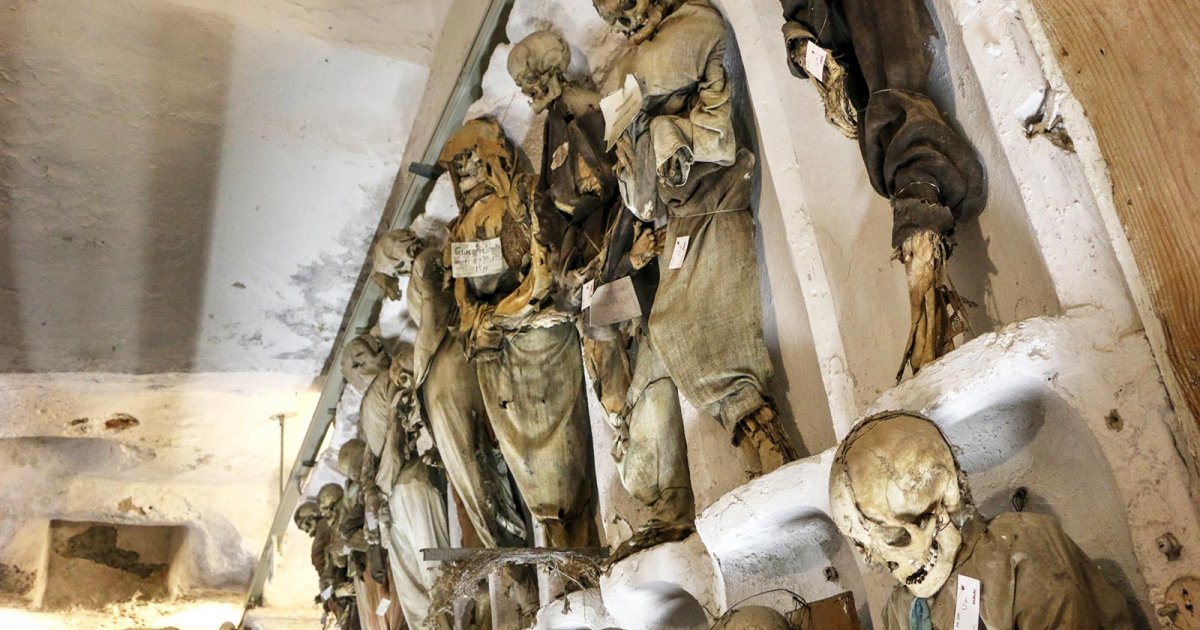CAPUCHIN CATACOMBS, Capuchin Catacombs
 Language: English / USA
Language: English / USA
Hi, my name’s Scott, and I’m your personal guide. Along with MyWoWo, I’d like to welcome you to one of the Wonders of the World: the Capuchin Catacombs, the amazing underground cemetery of Palermo.
The underground cemetery of the Friars, improperly known as the Capuchin Catacombs, was built in 1599, following a curious event. A number of friars, who had entered the graves of the convent to collect the bones for burial in the area set aside for the purpose, saw dozens of bodies of their brothers that were perfectly preserved, and simply looked as if they were asleep. Incredulous at the sight, they observed the particular conditions that had allowed for this natural process of mummification, so that they could develop their own effective technique to preserve the bodies of the deceased. The bodies were left to drain and dry in arid areas for at least a year after having their internal organs removed, and were then washed and dressed to be displayed along the walls, or placed in niches. The families were then required to maintain the bodies for three years, by treating them with wax to prevent decomposition.
Initially, the cemetery was reserved for friars from only the convent, but it was later opened to others provided that they had contributed to the construction of the church. The first "non-friar" to be buried here, in 1570, was Francesco D'Avàlos, the son of a marquis who was a benefactor of the Capuchin Order; he was followed by his father a year later.
Over the years, the galleries became the resting place of some 8000 deceased, dressed in their finest clothes, and 1252 mummies, divided by sex and social class. In the various sectors, often held together by iron wire or grotesquely hooked to the wall, you can recognize: men of the church; merchants and middle-class figures in elegant festive dress; officials in gala uniforms; young women who had died single, wearing wedding dresses; whole families, sometimes standing up on high shelves, behind slender balcony-like railings, as well as numerous children.
Although not in pristine condition, all the clothes are original, and are an exceptional historical testament to the fashions of the time.
Let me leave you with an interesting fact: look for Rosalia Lombardo, a child who died in 1920 at the age of two and was embalmed by a specialist who, thanks to a complicated chemical formula, succeeded in maintaining her appearance intact, and it looks as if she is sleeping.



